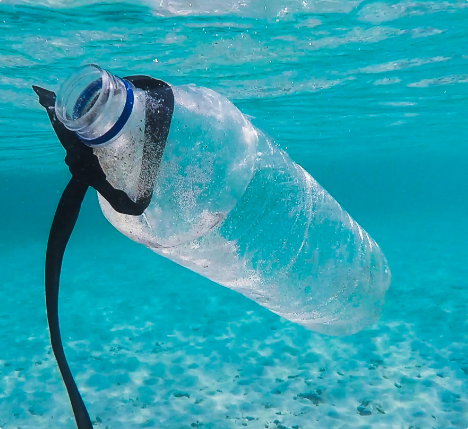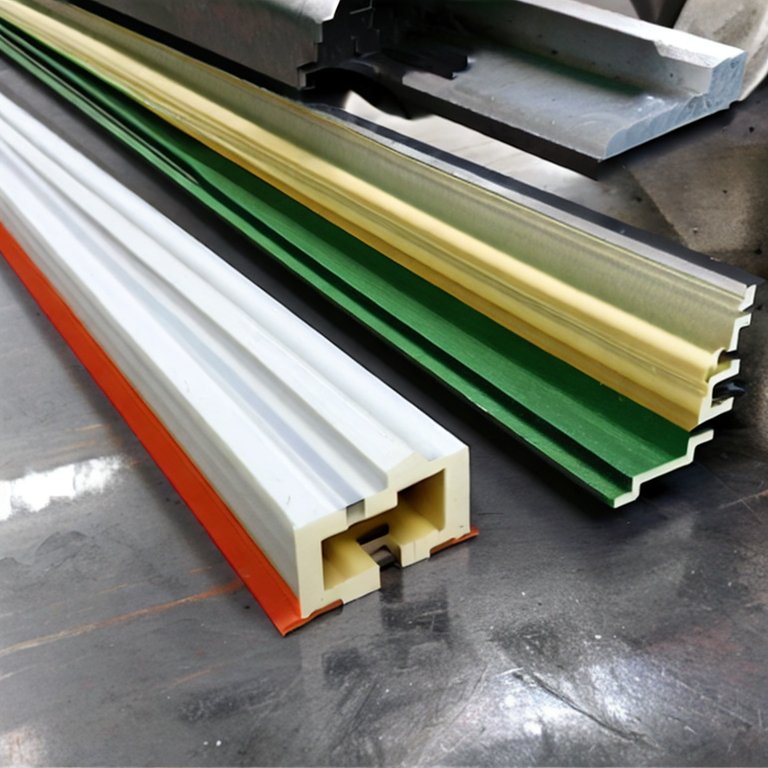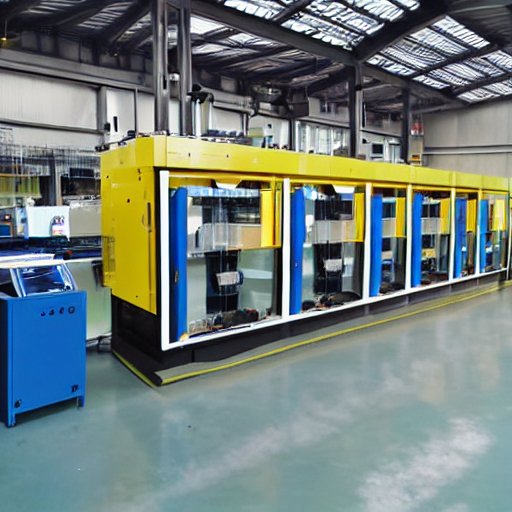Injection blow moulding is a popular manufacturing process used in the plastics industry to create hollow, thermoplastic products. This process combines the benefits of injection moulding and blow moulding to produce high-quality, complex-shaped plastic products with excellent dimensional accuracy, consistency, and repeatability. Injection blow moulding is widely used in various industrial sectors, including automotive, packaging, medical, consumer goods, and construction.

Injection Blow moulding Process
Injection blow moulding is a three-step process that involves injection moulding a preform, stretching and blowing of the preform, and ejection of the final product. The preform is made by injection moulding a thermoplastic material into a mould cavity. The preform is then transferred to a blow moulding machine, where it is stretched and blown to the desired shape and size.
Applications of Injection Blow moulding
Injection blow moulding is widely used in various industrial sectors, including automotive, packaging, medical, consumer goods, and construction. Automotive applications of injection blow moulding include the production of air ducts, washer bottles, and fuel tanks. Packaging applications include the production of bottles, jars, and containers for food, beverage, and personal care products. Medical applications include the production of syringes, vials, and test tubes. Consumer goods applications include the production of toys, sporting goods, and household items. Construction applications include the production of drainage pipes, septic tanks, and water tanks.
Advantages and Limitations of Injection Blow moulding
The main advantages of injection blow moulding include high dimensional accuracy, consistency, and repeatability, low material waste, and fast cycle times. Injection blow moulding also allows for producing complex-shaped and lightweight products with excellent surface finish and good strength. However, the process has some limitations, including higher capital investment, limited mould cavities, and limited flexibility in product design.
Material Properties in Injection Blow moulding
Injection blow moulding is compatible with a wide range of thermoplastic materials, including polyethylene (PE), polypropylene (PP), polystyrene (PS), polyvinyl chloride (PVC), and polyethylene terephthalate (PET). Each material has unique properties that make it suitable for specific applications. For example, PET is commonly used in the production of bottles and containers due to its excellent barrier properties, transparency, and recyclability.
Future Trends in Recycling of Injection Blow moulded Products
As the demand for sustainable manufacturing and recycling increases, the plastics industry is exploring new ways to recycle injection blow moulded products. Some of the emerging trends in recycling of injection blow moulded products include chemical recycling, mechanical recycling, and biodegradable polymers. Chemical recycling involves breaking down the plastic into its basic building blocks and using them to create new plastic products. Mechanical recycling involves grinding the plastic into small particles and using them to create new products. Biodegradable polymers are also being explored as a potential solution to the plastic waste problem.
The future of injection blow moulding looks promising as the demand for lightweight and durable plastic products continues to increase across various end-use industries. The market is expected to grow due to adopting sustainable manufacturing practices, recycling, and using biodegradable polymers. The industry is also exploring new technologies, such as 3D printing, to improve the design and production of injection blow moulded products.
Market Price Developments and Global Impact of Injection Blow moulding
The global injection blow moulding market is expected to grow at a CAGR of 4.8% from 2020 to 2027, driven by the increasing demand for lightweight and durable plastic products in various end-use industries. The Asia Pacific region is the largest market for injection blow moulding, followed by North America and Europe.
Various factors, including raw material prices, production costs, and demand-supply dynamics influence the market price of injection blow moulded products. The price of raw materials, such as PE, PP, PS, PVC, and PET, can fluctuate depending on factors such as oil prices, supply chain disruptions, and geopolitical tensions. Production costs can also vary depending on factors such as labor costs, energy costs, and transportation costs.
The global impact of injection blow moulding is significant, as plastic products have become an integral to modern life. However, the increasing use of plastics has also led to environmental concerns, such as plastic waste and pollution. To address these concerns, the plastics industry is adopting various sustainable manufacturing practices, such as recycling and the use of biodegradable polymers.
Impact of Injection Blow moulding around the World
Injection blow moulding has significant environmental and economic impacts around the world. On one hand, the process enables the production of lightweight and durable plastic products that are widely used in various end-use industries, such as automotive, packaging, medical, consumer goods, and construction. The use of plastic products has improved the quality of life for millions of people by providing affordable and convenient products that are essential in modern life.
On the other hand, the increasing use of plastics has also led to environmental concerns, such as plastic waste and pollution. Injection blow moulding produces plastic products that can end up in landfills or oceans, where they can take hundreds of years to degrade. Plastic waste also harms wildlife and ecosystems, leading to negative impacts on human health and the environment.
Injection blow moulding is widely used in industrial sectors, generating revenue for manufacturers, suppliers, and distributors. The market for injection blow moulding is expected to grow, driven by the demand for lightweight and durable plastic products in various end-use industries. The industry is also exploring new technologies, such as 3D printing, to improve the design and production of injection blow moulded products.
However, the economic impacts of injection blow moulding are not always positive. The production and disposal of plastic products can be costly, leading to negative impacts on the environment and public health. The industry is facing increasing pressure from regulators and consumers to adopt sustainable manufacturing practices and reduce the negative impacts of plastic products.
Injection Blow moulding and Recycling
Injection blow moulding has a significant impact on recycling efforts. The use of plastic products has increased over the years, leading to a surge in plastic waste. Recycling is an effective way to reduce plastic waste by reusing plastic materials and reducing the demand for virgin plastic. Injection blow moulding products can be recycled and reused, contributing to the circular economy.
Recycling injection blow moulded products involves sorting, cleaning, and processing the plastic materials. The recycled plastic can be used to produce new injection blow moulded products, reducing the need for virgin plastic. This process helps to conserve natural resources, reduce greenhouse gas emissions, and minimize waste in landfills.
In addition to recycling, the plastics industry is exploring new technologies, such as the use of biodegradable polymers, to reduce the negative impacts of plastic waste on the environment. Biodegradable polymers are designed to degrade naturally in the environment, reducing the amount of plastic waste that ends up in landfills or oceans.
Recycling injection blow moulded products have significant economic benefits as well. The recycled plastic can be sold to manufacturers, generating revenue for recycling companies and contributing to the circular economy. This process also creates jobs and supports local economies.
In conclusion, injection blow moulding significantly impacts recycling efforts, as the products can be recycled and reused, contributing to the circular economy. The industry is adopting sustainable manufacturing practices, such as recycling and the use of biodegradable polymers, to reduce the negative impacts of plastic waste on the environment. Recycling injection blow moulded products also has significant economic benefits, generating revenue for recycling companies and supporting local economies.
Injection blow moulding:
Injection blow moulding is a versatile and cost-effective manufacturing process that offers many advantages for various industries, including packaging, automotive, and consumer goods. While it does have some disadvantages and environmental concerns, the industry is actively exploring ways to address these challenges through innovative materials, sustainable practices, and improved recycling technologies. As the demand for lightweight and eco-friendly plastic products continues to grow, injection blow moulding is expected to play a significant role in shaping the future of manufacturing.
Injection blow moulding is a versatile manufacturing process that offers various advantages, including high dimensional accuracy, consistency, and repeatability. The process is widely used in various industrial sectors, such as automotive, packaging, medical, consumer goods, and construction. The future of injection blow moulding looks promising as the demand for sustainable manufacturing practices and lightweight and durable plastic products continues to increase. The industry is also exploring new technologies, such as recycling and the use of biodegradable polymers, to address environmental concerns. As the industry continues to evolve, it will be essential to adopt sustainable manufacturing practices and design products that meet the changing needs and preferences of consumers.






